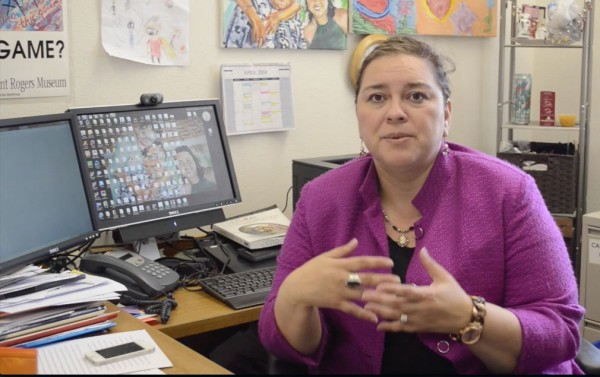EL PASO — The concept of volunteer work is evolving rapidly within higher education as a relatively new idea called service learning, which transforms book learning into hands-on work in the community.
According to Campus Compact, a national coalition of public and community service organizations, 44 per cent of college students participated in some form of volunteer work during the 2011-2012 academic year, an estimated $9.7 billion worth of service to their communities.
Hector Garza, a junior studying political science at the University of Texas Pan American in Edinburg, Texas, describes service learning as early career training for a college student. He explained that “service learning actually gives you the opportunity take it to the community and actually see what you are learning and how it comes to life.”
Service learning takes place worldwide impacting millions of students and communities. This past April, 1, 400 high school students, college professors, teachers, and non profit representatives from the U.S. and other countries gathered at the 26th Annual Service Learning Conference in Washington, D.C.
The Monumental Conference, as it was named, offered many 90-minute workshops to sharpen and educate attendees about service learning with tools, resources, and ideas to better serve their communities.
“I now have a better understanding for how other people in the country are helping their communities,” said Rick Garza, a student from the University of Texas at El Paso. He explained that through this service learning conference he gained a better idea of different ways to engage. Rick called helping his community “virtuous” and “dedication.”

UTEP Professor, Gina Nuñez-Mchiri, integrates service learning in her classes because it helps students develop leadership skills and makes them aware of their communities’ needs. Photo credit: Karina Moreno
As volunteers, students do not get paid for the their work. Their time, talents, and dedication are donated. Although through Independent Sector’s Value of Volunteer Time, one can calculate the dollar value of a volunteer hour. In 2013 that hour was worth $22.55.
Through the Center for Civic Engagement (CCE) at UTEP, students can engage in their community. With over 300 non-profit organizations in El Paso, college students can participate in over 20 hours of service a semester, getting both awareness of the community’s needs and hands on work experience.
As the CCE mission states, “to enhance higher education and contribute to the public good through community-based teaching and learning initiatives that enrich student education, promote civic engagement, and improve the community while capitalizing on the region’s and UTEP’s social and intellectual capital.”
While some professors emphasize service learning through the classroom curriculum, students bring service learning to life during the community engagement process a they shift from the material in the textbook to the real world.
Even though volunteering doesn’t provide income, students who volunteer get to know what jobs or internships are available for them.
Listing service learning on their resumes adds more abilities and assets to their experience. Students can serve as mentors, coordinators, advocates, companions, tutors, and many more things. This gives students a topic of interest to talk about in a job or scholarship interview.
Some volunteering opportunities open the door to creating new and reliable references.
Enrique Botello, a business undergraduate student at UTEP said, “Service-Learning helped me get a job. While participating in service learning I gained professional skills and communication skills which helped me create confidence.”


Thanks Nadia for writing about this important community work. Wish there were more professors like Dr. Nunez who include service work in their curriculums.